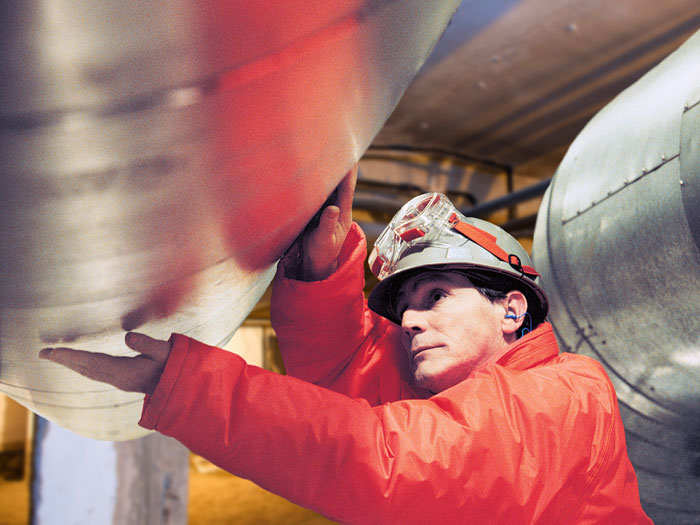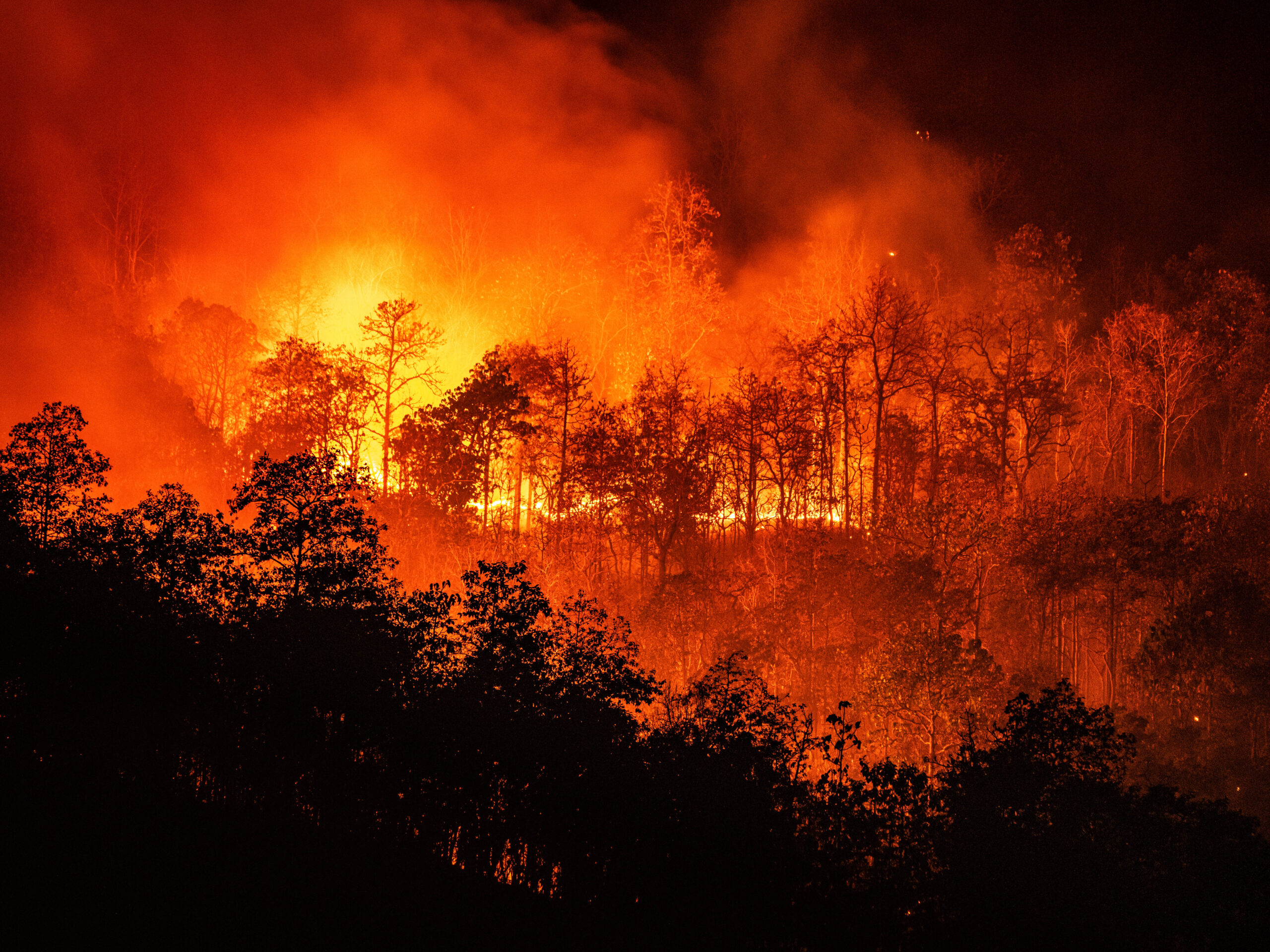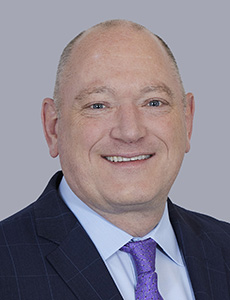Risk Scenario
Sick Building Blues
Disclaimer: The events depicted in this scenario are fictitious. Any similarity to any corporation or person, living or dead, is merely coincidental.
Part One
Stacie Egger’s runny nose woke her up before the January sunlight did. She blew her nose, for what seemed the umpteenth time in the past 24 hours.

Heavy from sleep, she pushed the indented button on her phone down to illuminate the screen to check the time.
5:40 a.m., too darn early to be getting up. But she had this sneezing and congestion that just wouldn’t go away, headaches too.
The headache wasn’t there this morning but she feared that it would come on again this afternoon, as it had several times in the past couple of weeks.
The steam from the shower offered some relief, but as the 28-year old designer drove to work, she sneezed half a dozen times more.
“What is this?” she wondered. “I hope I don’t have the flu.”
______
In her pod at Mindbender, the design and marketing firm, Stacie sipped her morning coffee and tried to concentrate on work. But it seemed like people were sneezing all around the office. Two of her team members were out sick.
Fearing a run of the flu, Stacie emailed the company’s human resources manager, Linda Morris on Jan. 23, thus etching her concern in concrete.
“I’m concerned that much of our staff is out sick or seems to be suffering from flu-like symptoms,” Stacie wrote Linda.
Linda was already seeing what Stacie was talking about. She had been tracking absences for the past three months. Mindbender really had a problem on its hands by all appearances. The company had logged an increase in sick days of 41 percent over this time last year.
Linda ordered hand sanitizers to be placed throughout the office, and also sent out an email re-emphasizing that the company would reimburse employees for the cost of flu shots and other preventative measures.
With authorization from her CEO, Linda also contacted Able Global Properties, the New York-based real estate investment firm that owned the mixed-use development, Riverbend, which was built on the site of a former tube steel manufacturing plant on the Ohio River.
Linda told an Able Global operations manager that her firm was concerned about the air quality in the office. As a triple-net renter, Mindbender had borne the cost of the build-out of its office. But under the terms of the rental agreement, Able Global was responsible for the building’s operation and maintenance.
In her conversation with Able Global, Linda suggested that the property manager hire an environmental consultant to look into the air quality issue. After all, the office building was built on a brownfield, Linda reasoned.
The operations manager knew what Linda meant. “Brownfields” describe abandoned, former industrial properties that, generally speaking, have contamination.
_____
“She said what?” said Glenn Able, the founder of Able Global, when his operations manager told him a tenant was asking his company to hire an environmental consultant.
“I love it when people tell me how to run my business,” Able said.
“What should I tell her?” his operations person asked.
“I don’t know that we need to tell her anything,” Able said. “It’s flu season isn’t it? I’ll think about it.
“Besides, I think we have some environmental coverage as a part of our general liability policy, though, if there is something to all of this,” he added.
But he couldn’t remember the limits on it right off. He’d have to look into that.
Part Two
Two more weeks went by before Able Global Properties heard from Linda Morris at Mindbender again.

The company was still having problems with employees calling out sick. Did Able do anything with that suggestion about getting an environmental consultant in to examine the building’s air quality?
“Not yet,” she was told. “We’ve got that issue under review.”
“I think you better be doing more than thinking about it,” she said. “We’re going to have to seriously evaluate our options on this.”
In the meantime, employees with Mindbender, tired of living with illness long enough, started to bring pressure on the management. And one of Stacie’s co-workers started doing some Internet research into the history of the property.
She found that the Riverbend development was built on the site of the old Conn Tube Works, a steel manufacturing plant that made tubes for the oil and gas industries. Stacie’s co-worker also found out that there were solvents used in the steel cutting at the old plant that were highly toxic.
“I wonder if chemical vapors are getting into the air here,” Stacie’s co-worker Magritte says to her one day on a coffee break.
“Or mold or something,” she says.
Stacie e-mailed a friend at another firm who worked in the same building.
“Have you been having a bunch of people out sick?” she asked her friend.
“Yeah, a good bit,” the friend e-mailed back. “Why?”
“I think this building might have sick building syndrome,” Stacie responded.
______
Having responsibility for human resources and operations, Linda did her own research into buildings that were built on brownfields. Through her contacts in the community, Linda learned that office buildings and other structures built on brownfields were frequently equipped with passive ventilation systems that trapped and diverted damaging gases away from work areas.
“Could there be vapors getting into this building?” she wondered.
Linda got on the phone to her broker and raised her concerns.
“We’ve got a lot of people in this office who aren’t feeling well,” she said. “Do you mind coming down here and meeting with me on this?”
Mindbender’s broker, Cleveland-based Reggie Ames, complied. He was in Linda’s office the next morning.
Ames and Morris took a tour of the Mindbender offices and looked outside at the state of the property. Using his gift for gab, Ames chatted up a maintenance worker during his visit.
“This building, does it have a passive ventilation system under the slab?” Ames asked the worker.
“Sure does,” said the worker. “My cousin was part of the crew that built it.”
While talking to the maintenance worker, Ames looked up to the roof of the four-story building, noticing some discoloration on the trim that runs underneath the eaves of the buildings, just under the roof.
“That hurricane that came through here in October, I take it you got a lot of water on the property?” Ames asked the maintenance worker.
“Oh yeah, we got a ton. It was soaked around here for days.”
____
Later, in Linda’s office, Reggie shared his thoughts.
“I think you might have a couple of things going on here,” he told Linda.
“You could have a mold issue from water intrusion due to the hurricane,” he said. “Or you could have a failure or malfunction of the passive ventilation system under the slab.”
“How would we know?” Linda asked.
“You wouldn’t. You better get an environmental consultant in here to check. We have one that we use a lot. Should I call him?” Reggie offered.
“Yes, please do,” Linda agreed.
Part Three
By March 9, about six weeks since Stacie first complained to her HR manager, Linda opened up an email that was to say the least, unsettling.
Attached to that email, one of several attachments, was a Word doc with a report from the industrial hygienist on staff with the environmental consultant Reggie recommended.

The news was not good. From what the industrial hygienist could assess, supported by an investigation by engineers with the environmental consultant, there was a good chance that the passive ventilation system under the building either malfunctioned or was overridden by vapor levels that were unsafe for humans.
There was also a possibility, from the levels the hygienist was seeing, that water from the hurricane or perhaps even an intense summer storm, had gotten into the walls of the building: Mold was growing as a result.
How long mold might have been growing in this building was anybody’s guess and the evidence was inconclusive. Individuals exposed to elevated mold levels can experience asthma, infections and other symptoms and those who are exposed for long periods of time, can suffer serious health consequences, including damage to their lungs and sinuses.
For office workers exposed to harmful chemical vapors seeping into their building, the long-term effects could be even more severe.
Mindbender was now suffering production lags due to the increases in sick days the firm was seeing.
Linda wrote a lengthy email to Glenn Able of Able Global. She attached the report from the industrial hygienist showing how compromised the air quality was in the Mindbender offices.
As soon as Glenn got the email and opened the attachment, he picked up the phone to call his attorney.
“I think I did something stupid,” Able said to his lawyer.
“What do you think you did?” the attorney asked.
“One of my tenants was complaining about bad air in their office and I blew them off a little. Now I’m holding an air quality report from a consultant hired by the tenant. The report is not good.”
“So they have documentation of what? Chemical vapors? Mold?”
“How about both?”
“That’s not good. You were wrong to delay them,” the attorney said.
“Do you have any idea what kind of environmental insurance you have for that building?” the attorney asked.
“I’m looking into it,” Able said.
“I’d look into it sooner rather than later if I were you,” the attorney replied.
The email from Linda Morris wasn’t the only email Able got that day on this very topic.
Stacie’s email to her friend had struck a nerve. The human resources director for Stacie’s friend’s company had written to Glenn Able using the same tone and content that Linda had used: “We’re looking at litigation here unless we see some responses to our concerns, and quickly,” the HR director for the other company wrote.
Able now knew he had real problems and called his insurance broker. Able’s broker also advised that he get the air quality checked.
Holding an indoor air report paid for by a tenant that could eventually be seen by the tenants’ employees, Able Global was now looking at the prospect that widespread sickness on the part of its tenants’ staff members could morph into bodily injury claims and long-term ones at that. Could he be on the hook for these? Able wondered.
Working in concert with Mindbender’s attorney, its CFO and its CEO, Linda crafted a letter to employees detailing the results of the environmental consultant’s air quality report.
Before that letter was finished, Linda got a letter from the environmental consultant that had been hired, too little, too late, by Able Global Properties. The letter was maddening in its vagueness.
“We have concluded,” the letter stated, “that the passive ventilation system under the building appears to be functioning properly.” The letter went on to state that the consultants hired by the property owner could find no evidence of mold on the property.
Able Global appeared to be walking into litigation with Mindbender and at least one other tenant, possibly more.
Mindbender was looking at losses in revenue due to decreased employee productivity, business interruption as it was in all likelihood going to need to find a new office, and legal bills. Mindbender’s employees were also suffering physical illness and incurring medical costs.
“I don’t know what I could have done differently,” Linda said as she hit “send” on the email to employees documenting the probable air quality problems in the Mindbender offices.
“I could have done a lot differently,” said Able, after meeting with his broker and determining that in all likelihood, the environmental coverage he thought he had with his general liability policy did not apply to this problem at all.
Summary
Both a tenant and an office building owner find themselves with sizable exposures after mold and vapors from industrial chemicals permeate office spaces.
![]()
 Video Insights: Matthew Kahn sat down with Marcel Ricciardelli, Senior Vice President, Environmental at Allied World who is the sponsor of this scenario, for an in-depth discussion of “Sick Building Blues”. Highlights of their conversation are integrated into the summary below.
Video Insights: Matthew Kahn sat down with Marcel Ricciardelli, Senior Vice President, Environmental at Allied World who is the sponsor of this scenario, for an in-depth discussion of “Sick Building Blues”. Highlights of their conversation are integrated into the summary below.
1. Don’t wait, investigate: Both the owner and the tenant in this scenario dig deep holes for themselves because they delay investigating what might be causing substantial increases in tenant-employee sick days.
2. Check your policies, know your exclusions: If you are a building owner or tenant, you should examine your general liability coverage closely and see what you can do to shore up your environmental coverage.
3. A complaint is a gift: The owner of the building in this scenario should not have played doctor by making a judgment call about the safety of his building. He needed to move quickly and to rely on professional opinions as to what was going on in the building. His tenant was doing him a favor by contacting him and he should have treated her concern more seriously.
4. It’s why you pay them: Linda did the right thing in contacting her broker but she waited too long to do it. Brokers and consultants who are earning their keep are helping their clients find solutions as soon as a problem is expected.
5. Work quickly after a storm: Major wind and rainstorms are becoming more common. Mold has entered the mainstream as a health concern that needs to be mitigated as soon as there is a possibility of an issue.











